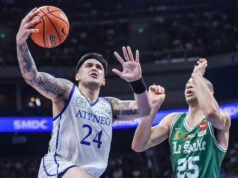Palma de Mallorca Grand Prix
Palma de Mallorca, Balearic Islands, Spain
Nov. 16-25, 2017
Final Standings
1-2. Levon Aronian ARM 2801, Dmitry Jakovenko RUS 2721, 5.5/9
3-9. Hikaru Nakamura USA 2780, Ding Liren CHN 2774, Peter Svidler RUS 2763, Teimour Radjabov AZE 2741, Penteala Harikrishna IND 2738, Evgeny Tomashevsky RUS 2702, Richard Rapport HUN 2692, 5.0/9
10-12. Maxime Vachier-Lagrave FRA 2796, Pavel Eljanov UKR 2707, Ernesto Inarkiev RUS 2683, 4.5/9
13-15. Anish Giri NED 2762, Li Chao CHN 2741, Francisco Vallejo Pons ESP 2705, 4.0/9
16. Alexander Riazantsev RUS 2651, 3.5/9
17-18. Boris Gelfand ISR 2719, Jon Ludvig Hammer NOR 2629, 3.0/9
Time Control: 100 minutes for the first 40 moves, 50 minutes for the next 20 moves, and then 15 minutes play-to-finish with 30 seconds added after every move starting move 1.
Here is the situation. In March we will have the 2018 Candidates’ tournament to take place in Berlin. Eight of the top players of the world will compete in a double round-robin event and the winner will challenge Magnus Carlsen for the World Chess Championship in London on November 2018.
The eight players are:
The loser of the 2016 world championship: Sergey Karjakin
The two finalists in World Cup 2017: Levon Aronian and Ding Liren
Top 2 highest rated players: Fabiano Caruana, Wesley So
Organizer’s Nominee: Vladimir Kramnik
The top two of the Grand Prix 2017: Shakhriyar Mamedyarov and Alexander Grischuk.
About the two qualifiers from the Grand Prix, Mamedyarov and Grischuk were leading the Grand Prix going into the final event in Palma de Mallorca just last month. Both Maxime Vachier-Lagrave and Teimour Radjabov could take over one or two slots with a +2 performance (meaning 2 more wins than losses) in Palma. Neither of them succeeded.
The Frenchman-with-3-names started off well with a nice win vs Boris Gelfand in the first round but could not get the needed second full-point. In the last round he tried too hard against Jakovenko and even lost. Vachier-Lagrave is a player of very high class and tactical genius and he will be missed in the Candidates. There were some who criticized him for his 13-move draw with Nakamura and 10-move armistice with Svidler but I understand that you cannot maintain such an energetically high level of play without taking some rest days.
Radjabov’s tournament had more adventures. First, a 12-move draw with Riazantsev then a nice King’s Indian victory vs Vallejo Pons which I will show you in a while. After that came another short draw with Giri and a loss to Nakamura. Then a quick draw with Harikrishna followed by another loss, this time to Tomashevsky. With three games to go and his score at -1 only a clean sweep of the last three rounds will get him into the Candidates. He almost did it, beating Li Chao in round 7, Gelfand in round 8 but was held to a draw by Rapport in the final round, ending his candidates’ aspirations.
Vallejo Pons, Francisco (2705) — Radjabov, Teimour (2741) [E73]
FIDE Grand Prix Palma 2017 Palma de Mallorca (2), 17.11.2017
1.d4 Nf6 2.c4 g6 3.Nc3 Bg7
As many of our BW readers know Radjabov is currently the world’s best authority on the King’s Indian Defense.
4.e4 d6 5.Be2 0–0 6.Be3
I don’t think the line that Vallejo uses in this game has a name yet, but it is similar to the Makogonov (1.d4 Nf6 2.c4 g6 3.Nc3 Bg7 4.e4 0–0 5.Nf3 d6 6.h3 e5 7.d5 e5 8.g4 Na6 9.Be3). Ivan Sokolov used this system three times against Jorden Foreest in their match in Hoogeveen last year and won all three games.
6…e5 7.d5 a5 8.g4 Na6 9.h4
In contrast with the Makogonov White has played his h-pawn to h4 directly without “wasting” a move on h2–h3, so you might say this is an improvement, but of course it is not that simple.
9…Nc5 10.f3
In the Makogonov the kingside pawn advances are made only after Ng1–f3–d2. Here in this line how to develop the knight is a problem.
10…h5 11.g5 Nh7 12.Kd2!?
Most people would play Qd2 followed by 0–0–0 here, but Vallejo thinks that his king should be more secure on d2. GM Yermolinsky, annotating the game in the Chessbase Web site, opines that he “underestimated the importance of maintaining pressure on the d-file to fight against c7–c6.”
12…Bd7 13.Nh3 c6 14.Nf2 cxd5 15.exd5
After 15.cxd5 Black has …a5–a4, …Qa5 and …b7–b5 and White’s king will be feeling insecure on d2.
15…f5 16.gxf6 Nxf6 17.Bxc5
It must have been painful for White to part with his dark-squared bishop, but he really wanted to get a knight on e4.
17…dxc5 18.Kc2 a4!
Radjabov shows his understanding on King’s Indian formations. He wants to weaken the long diagonal a1–h8 foro his g7–bishop. For us people who have seen the twin brilliancies Pachman vs Bronstein and Zita vs Bronstein, surprisingly enough from the same Prague vs Moscow Matrch in 1946 (shown below), this decision is very logical.
19.Qd2
[19.a3 creates a hole on b3 for Black’s queen to exploit after …Qb6.]
19…a3 20.b3 e4!
Just like I said — opening up the long diagonal.
21.fxe4
[21.Nfxe4 Nxe4 22.fxe4 Rf2 is even worse]
21…Ng4 22.Nxg4 hxg4
Position after 22…hxg4
Here is what Black will try to accomplish: (1) put his bishop on either d4 or e5, (2) put a rook on f2, queen on f6 and then the other rook on f8, (3) push his passed g-pawn.
23.h5 Rf2 24.h6 Be5 25.Raf1 g3 26.Rxf2 gxf2 27.Nd1 Qf6 28.Rf1 Bd4
With the idea of …Bh3.
29.Nxf2
White is just trying to muddy the waters, he already knows he is lost.
29…Bxf2 30.e5 Qxe5 31.Rxf2 Bf5+ 32.Kd1 Qa1+ 33.Qc1 Qxa2 34.Rxf5 Qxb3+
Please, not 34…gxf5?? 35.Qg5+ and it is White who is winning.
35.Kd2 Qa2+
[35…a2 36.Qa1 Qb4+ 37.Kc2 Qb1+ 38.Qxb1 axb1Q+ 39.Kxb1 gxf5 wins as well]
36.Ke1
[36.Kd1 Qb3+ simply goes back to the line above]
36…Qb2 37.Qf4 Qb1+ 0–1
You know what? The 36-move draw with Rapport in the last round was not a sterile position — it could have been fought on. When Radjabov shows up at the chessboard you don’t know whether it will be a fightless draw or a struggle to the finish. I think he got a bit confused himself at the end.
SOFTENING UP THE LONG DIAGONAL
Here are the two brilliant examples of softening up the long diagonal I wrote about earlier.
Pachman, Ludek — Bronstein,David Ionovich [E68]
Match/City Prague-Moscow 13,0–23,0 Moscow (Russia) (2), 03.1946
1.d4 Nf6 2.c4 d6 3.Nc3 e5 4.Nf3 Nbd7 5.g3 g6 6.Bg2 Bg7 7.0–0 0–0 8.b3 Re8 9.e4 exd4 10.Nxd4 Nc5 11.Re1 a5 12.Bb2 a4 13.Rc1 c6 14.Ba1 axb3 15.axb3 Qb6 16.h3 Nfd7 17.Rb1 Nf8 18.Kh2 h5 19.Re2 h4 20.Rd2 Rxa1 21.Rxa1 Bxd4 22.Rxd4 Nxb3 23.Rxd6 Qxf2 24.Ra2 Qxg3+ 25.Kh1 Qxc3 26.Ra3 Bxh3 27.Rxb3 Bxg2+ 28.Kxg2 Qxc4 29.Rd4 Qe6 30.Rxb7 Ra8 31.Qe2 h3+ 0–1
Zita, Frantisek —
Bronstein, David Ionovich [E68]
Match/City Prague-Moscow 13,0–23,0 Moscow (Russia) (6), 03.1946
1.c4 e5 2.Nc3 Nf6 3.Nf3 d6 4.d4 Nbd7 5.g3 g6 6.Bg2 Bg7 7.0–0 0–0 8.b3 Re8 9.Bb2 c6 10.e4 exd4 11.Nxd4 Qb6 12.Qd2 Nc5 13.Rfe1 a5 14.Rab1 a4 15.Ba1 axb3 16.axb3 Ng4 17.h3 Rxa1 18.Rxa1 Nxf2 19.Re3 Nxh3+ 20.Kh2 Nf2 21.Rf3 Ncxe4 22.Qf4 Ng4+ 23.Kh1 f5 24.Nxe4 Rxe4 25.Qxd6 Rxd4 26.Qb8 Rd8 27.Ra8 Be5 28.Qa7 Qb4 29.Qa2 Qf8 30.Bh3 Qh6 0–1
In his “100 Selected Games” former world champion Mikhail Botvinnik mentioned that the Ukrainian players (at that time the two leadings Ukranians were Isaak Boleslavsky and David Bronstein) had developed a “secret weapon” in the opening. Well, this is it.
Bobby Ang is a founding member of the National Chess Federation of the Philippines (NCFP) and its first Executive Director. A Certified Public Accountant (CPA), he taught accounting in the University of Santo Tomas (UST) for 25 years and is currently Chief Audit Executive of the Equicom Group of Companies.



